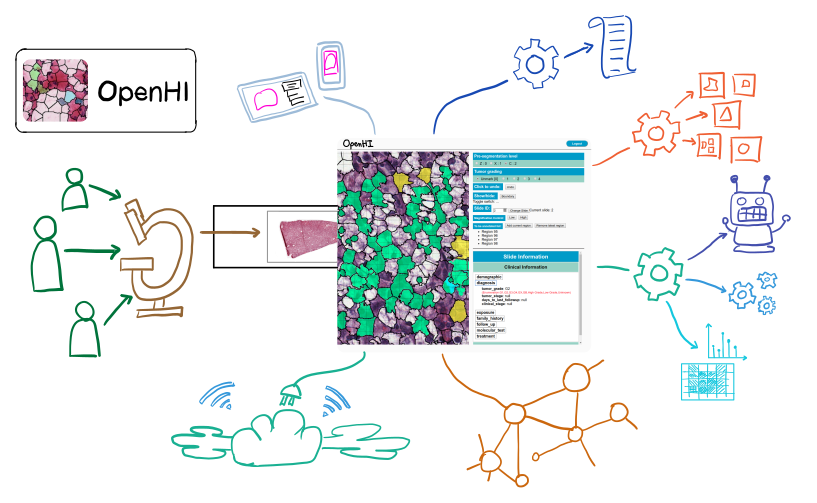Artificial Intelligence in Pathology
Transition from conventional to digital pathology -- With virtual slides, computational algorithms can be applied to analyze tissue structures at different levels: cellular, inter-cellular, cell architecture, texture of the tissue, etc. Connecting pathology to other areas in medicine is also possible.

AIPath 2021 workshop
The AIPath 2021 workshop will be held on Dec 9 - 12, 2021 in association with the BIBM 2021 conference.
For more information, please visit the workshop page.
AIPath 2020 workshop
The AIPath 2020 workshop will be held on Dec 16 - 19, 2020 in association with the BIBM 2020 conference.
For more information, please visit the workshop page.
Artificial intelligence has had successful applications in fields like computer vision and natural language processing. Behind these successes was the availability of large-scale annotated datasets. In the past decade, digitized histopathological images have gained quantity and accessibility so that application of machine learning techniques are feasible. The potential of the technology is far from being fully exploited in pathology. Our group, Biomedical Semantic Understanding Group, in Xi'an Jiaotong University, is working on facilitating transition of conventional to digital pathology. We believe that this can be done by
We describe our work in this site to promote development in digital pathology.
Since 2018, we have been developing and maintaining OpenHI, a digital pathology platform. This will facilitate transition from conventional to digital pathology in several ways: establish easy-to-use tools for pathologists and data scientists to work with multi-resolution images, reduce efforts in large-scale histopathological image annotation, and integrate semantic standards into annotated pathological database. Other than the platform, our group organize workshops as a forum for researchers in digital pathology. So far, AIPath2019 was organized in November 2019 in conjunction with BIBM2019 and AIPath2020 was organized in December 2020 in conjunction with BIBM2020
To get latest updates from us, please sign up for our newsletter (Frequency: less than once a month).